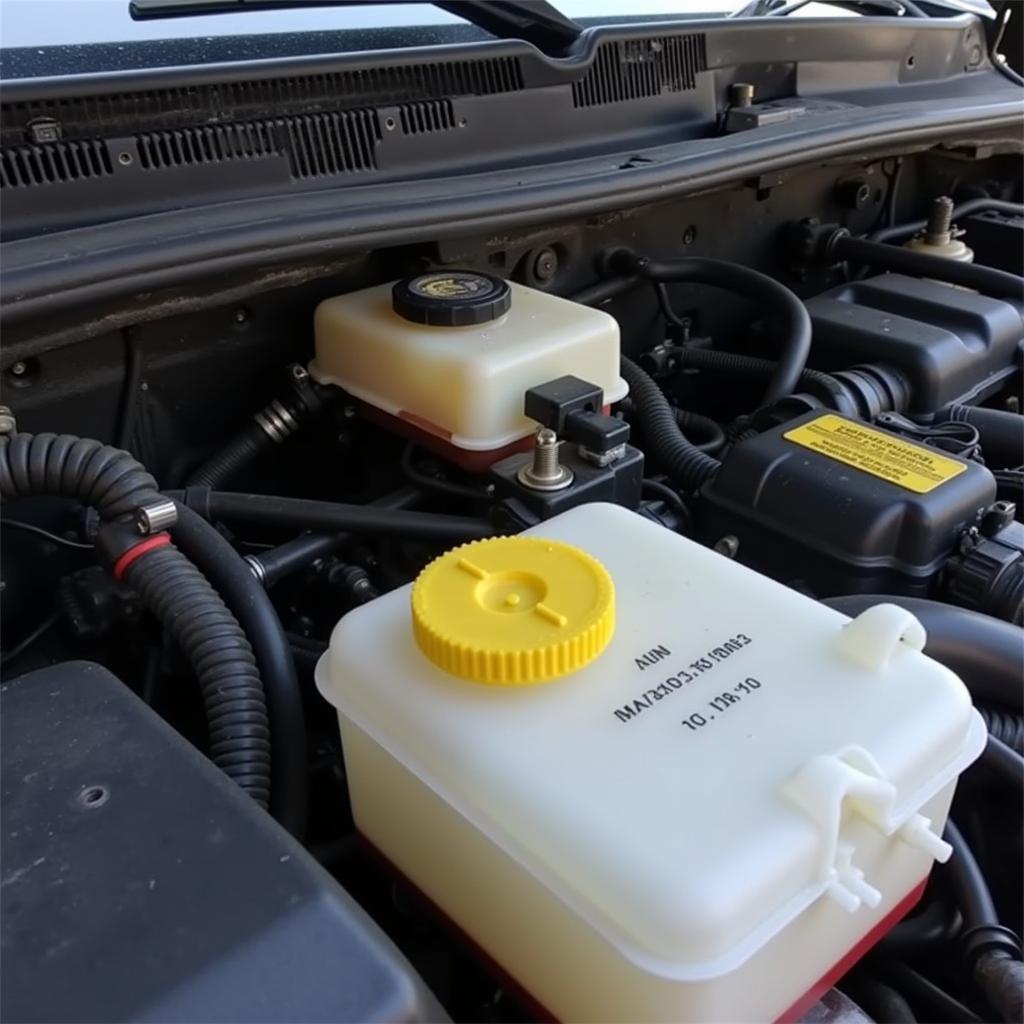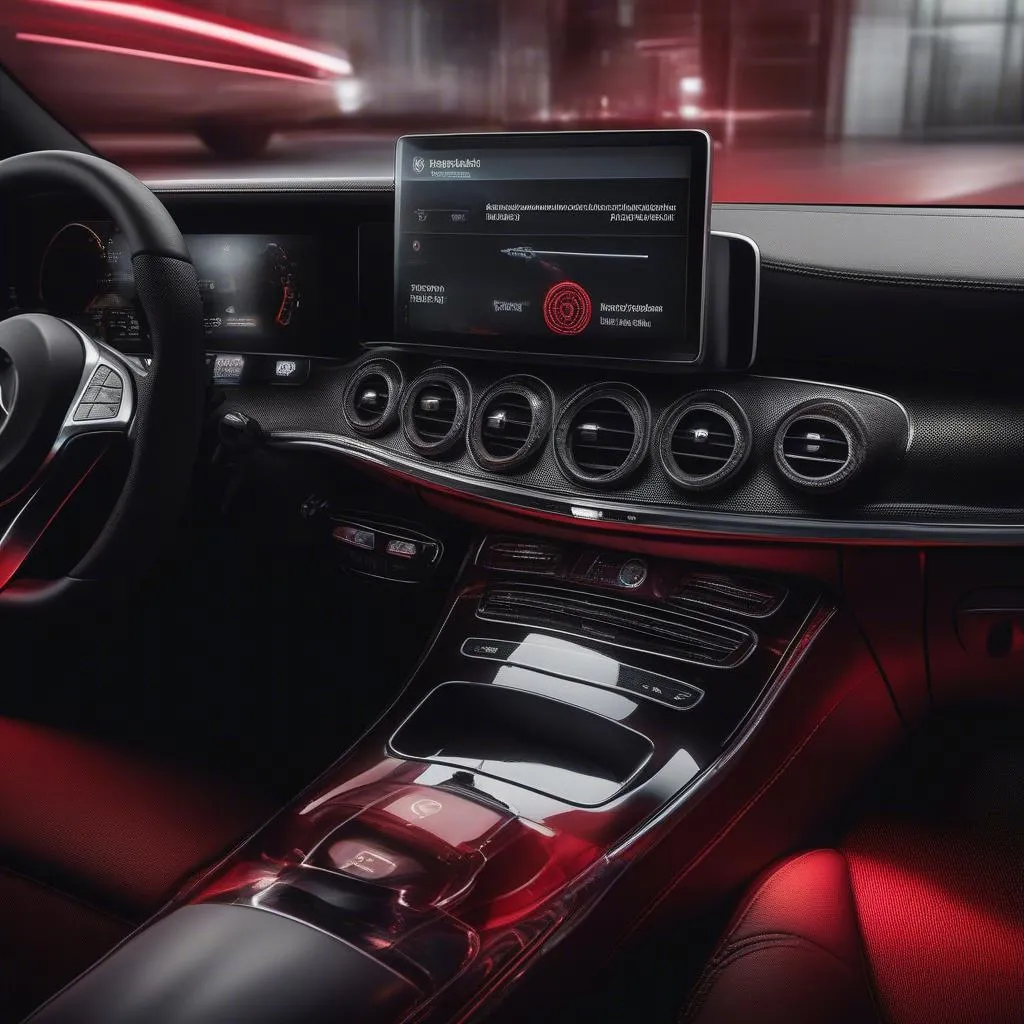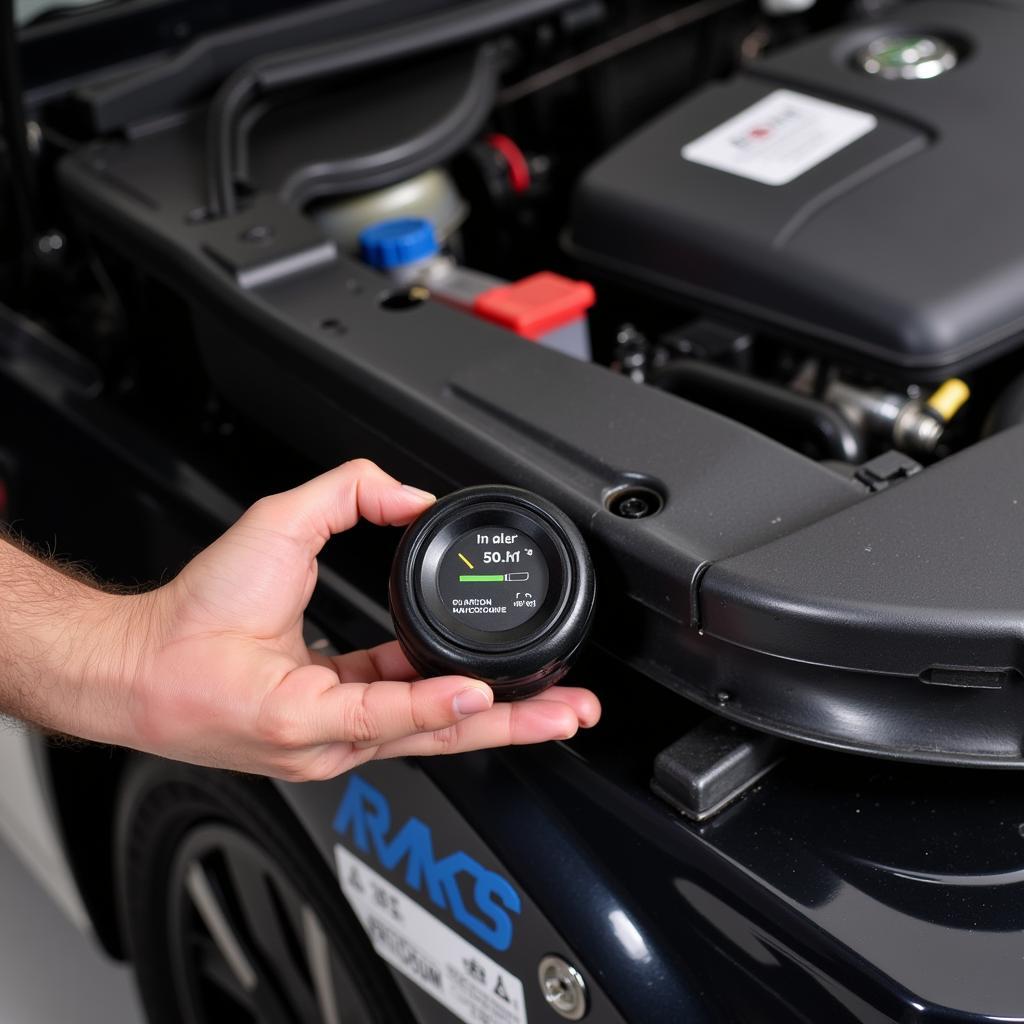The Lexus GX470 brake warning light can be a source of anxiety for any driver. This guide will help you understand why your Lexus GX470 brake warning light is on, what it means, and how to fix it, potentially saving you time and money.
Understanding Your Lexus GX470 Brake Warning Light
The brake warning light in your Lexus GX470 serves a crucial role: alerting you to potential issues within your braking system. This light can illuminate for several reasons, ranging from a simple parking brake engagement to more serious problems like low brake fluid or worn brake pads. Ignoring this warning could lead to dangerous driving conditions and costly repairs. So, understanding the potential causes is the first step to resolving the issue.
Common Causes of the Lexus GX470 Brake Warning Light
Low Brake Fluid
One of the most common reasons for the brake warning light is low brake fluid. This could be due to a leak in the braking system, worn brake pads, or simply needing a top-up. Checking your brake fluid level is a simple process and should be done regularly.
Worn Brake Pads
Brake pads wear down over time due to friction. Thin brake pads trigger the brake warning light as a safety measure. If your brake pads are worn, they need to be replaced promptly to ensure optimal braking performance.
Faulty Brake Sensor
Your GX470 has a sensor that monitors the brake fluid level and brake pad wear. A malfunctioning sensor can trigger the warning light even if there’s nothing wrong with your brakes.
ABS Issues
The Anti-lock Braking System (ABS) is a crucial safety feature. A problem with the ABS system can also trigger the brake warning light. This usually requires more advanced diagnostic tools.
 Checking the brake fluid reservoir in a Lexus GX470
Checking the brake fluid reservoir in a Lexus GX470
Troubleshooting the Lexus GX470 Brake Warning Light
- Check the Parking Brake: Ensure the parking brake is fully disengaged. Sometimes, a slightly engaged parking brake can trigger the light.
- Inspect Brake Fluid Level: Locate the brake fluid reservoir under the hood and check the fluid level. If it’s low, add the correct type of brake fluid as specified in your owner’s manual.
- Check Brake Pads: Visually inspect your brake pads through the wheel spokes. If they appear thin or worn down, it’s time for a replacement.
- Scan for Diagnostic Trouble Codes (DTCs): Using an OBD-II scanner, you can check for any diagnostic trouble codes related to the braking system. This can pinpoint the specific issue.
When to Seek Professional Help
While some issues can be resolved with DIY troubleshooting, certain problems require professional attention. If you’ve checked the basics and the light persists, or if you suspect an ABS issue, it’s best to consult a qualified mechanic.
“Ignoring the brake warning light is like ignoring a fever,” says expert automotive technician, John Miller, ASE Master Certified. “It’s a sign that something’s wrong and needs attention. Ignoring it can lead to bigger, more expensive problems down the road.”
Remote Diagnostics and Software Solutions
In some cases, advanced diagnostic software and remote programming can address certain brake system issues without physical intervention. This is especially beneficial for software-related glitches or module malfunctions.
“Remote diagnostics offer a convenient and efficient way to address specific software-related issues in the braking system,” adds Sarah Chen, Lead Diagnostics Engineer at AutoTech Solutions. “It can save time and money, especially for complex systems.”
Conclusion
Addressing the Lexus GX470 brake warning light promptly is critical for your safety and the longevity of your vehicle. By understanding the potential causes and utilizing the troubleshooting steps outlined in this guide, you can take the necessary actions to resolve the issue and get back on the road safely. Don’t ignore the warning—take action now!


